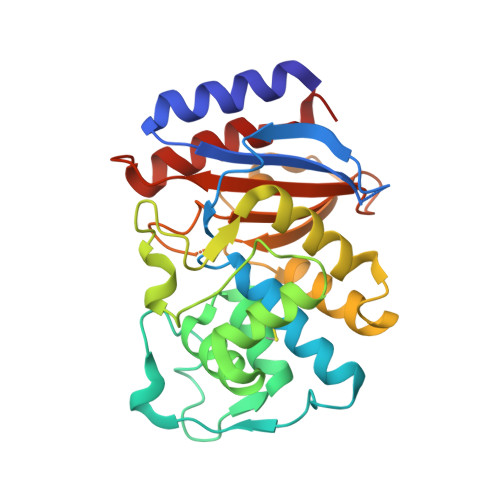Prediction of New Stabilizing Mutations Based on Mechanistic Insights from Markov State Models.
Zimmerman, M.I., Hart, K.M., Sibbald, C.A., Frederick, T.E., Jimah, J.R., Knoverek, C.R., Tolia, N.H., Bowman, G.R.(2017) ACS Cent Sci 3: 1311-1321
- PubMed: 29296672
- DOI: https://doi.org/10.1021/acscentsci.7b00465
- Primary Citation of Related Structures:
6B2N - PubMed Abstract:
Protein stabilization is fundamental to enzyme function and evolution, yet understanding the determinants of a protein's stability remains a challenge. This is largely due to a shortage of atomically detailed models for the ensemble of relevant protein conformations and their relative populations. For example, the M182T substitution in TEM β-lactamase, an enzyme that confers antibiotic resistance to bacteria, is stabilizing but the precise mechanism remains unclear. Here, we employ Markov state models (MSMs) to uncover how M182T shifts the distribution of different structures that TEM adopts. We find that M182T stabilizes a helix that is a key component of a domain interface. We then predict the effects of other mutations, including a novel stabilizing mutation, and experimentally test our predictions using a combination of stability measurements, crystallography, NMR, and in vivo measurements of bacterial fitness. We expect our insights and methodology to provide a valuable foundation for protein design.
Organizational Affiliation:
Department of Biochemistry & Molecular Biophysics, Washington University School of Medicine, 660 South Euclid Avenue, St. Louis, Missouri 63110, United States.















